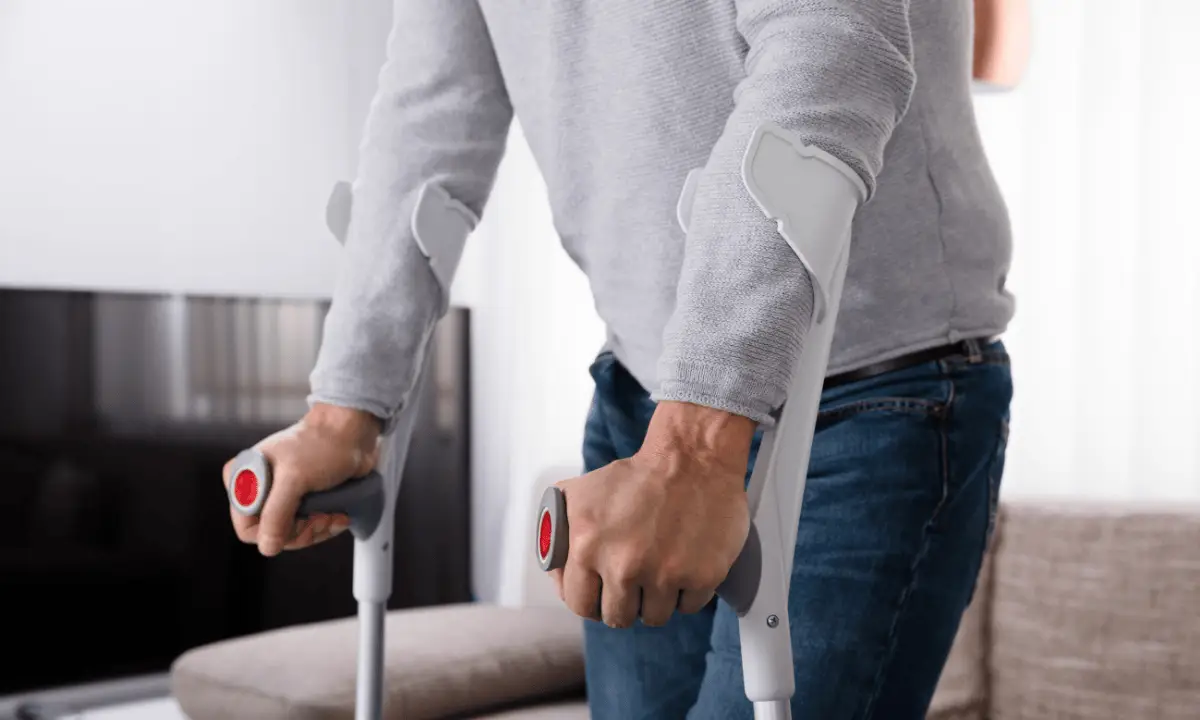
As a personal injury lawyer, I have listened to thousands of stories from injured clients about their pain and suffering stories and experiences. Whilst their stories sound like pain and suffering, most of them are not relevant to how pain and suffering compensation is calculated when included in compensation payouts. In this blog I will explain how pain and suffering compensation is calculated and how it applies to different compensation claims depending how and where you injured at the time.
In this blog I will be explaining what pain and suffering compensation is, how it is applied, calculated and how it is different depending on where and how you were injured in the first place.
What is Pain and Suffering in Compensation Claims?
Pain and suffering compensation takes into account your physical, psychological disabilities, quality of life and other losses as a result of the accident or injury. It is only included in some claims predominately for motor vehicle accident claims, public liability claims, medical negligence claims and workers compensation claims, for exempt workers only (police officers, paramedics, and firefighters). Although it has a similar meaning your eligibility to claim pain and suffering compensation is different depending on the type of claim.
Pain and Suffering in Motor Vehicle Accident Claims
If you were injured due to a motor vehicle accident, pain and suffering compensation can be claimed if your injuries, whether physical or psychological exceed the 10% whole person impairment threshold.
What would typically happen is you or preferably in my opinion, your personal injury lawyer, would refer you to an accredited Independent Medical Examiner (IME). That IME would then assess your physical or psychological injuries and depending on the extent of injuries write down what percentage your injuries are based on the American Medical Association (AMA) 4 Guidelines for Evaluation of Permanent Impairment. A typical example of a person who would exceed the 10% whole person impairment threshold for physical injuries is someone who has multiple injuries or one injury that has undergone surgery.
If it’s your psychological injury that should be assessed, then it would be based on a Psychiatric Impairment Rating Scale. That scale is to have your psychological injury assessed by an accredited IME speaking to you and reviewing your file to see if and how the consequences of your injury has been affected and apply a score from 1 to 5 to each one of the six scales.
The six scales are, self-care and personal hygiene, social and recreational activities, travel, social functioning, concentration, persistence and pace and employability. Based on the assessment, the IME would then calculate the score they noted from 1 to 5 for each scale to determine the median (average) class score and calculate the aggregate (overall) score. Depending on the overall score then that determines your whole person impairment percentage. From my own experience a s a personal injury lawyer, most people with psychological injuries are assessed between 5-30% whole person impairment.
The current maximum for pain and suffering in NSW for motor vehicle accidents is currently $605,000. The amount increases slightly each year. The amount you receive will be dependent on the severity of the injuries and how they affected you because of the accident. It is important to understand that each injury and its effect are dependent on your own circumstances and how it applies to you and so if you are eligible to claim pain and suffering you should provide evidence of how your life has negatively changed due to your injuries from the accident. If you want more information about motor vehicle accidents or car accident compensation and how it works then you can find out more information on our car accident lawyers page.
How much pain and suffering compensation should you claim?
Since pain and suffering compensation is so specific to your own circumstances the amount of compensation you should claim depends on what losses you have lost and will likely lose into the future because of the injuries from the accident.
Pain and Suffering – Stacey’s story
I had a client (whose real name is not Stacey) who was eligible to claim pain and suffering part of her compensation payout. She was 40 years of age, with 3 kids and was not working at the time of the car accident. She was intending on returning to work when her youngest child started school. The injuries affected her ability to work, sleep and socialise regularly. She suffered a lot because of the injuries from the car accident and required ongoing treatment. The insurer offered her $100,000 for pain and suffering. My client instructed me to reject the offer which I happily did, and we referred her claim for assessment by way of a decision maker instead.
After considering Stacey’s evidence including the statement that we took from her as to her injuries, disabilities and its effects on her quality of life in the accident the decision maker assessed that her non-economic loss damages to be $225,000. The assessor in his written decision noted “the claimant suffers significant and ongoing problems with her neck and shoulders as well as the psychological effects of her disabilities. She states she suffers anxiety, depression, stress and insomnia and I accept this. These injuries have had a significant effect on her capacity to enjoy her pre-accident social, sporting, domestic and recreational activities.”
Do I need a car accident lawyer for my pain and suffering compensation claim?
Not necessarily. Especially if you know the eligibility to claim pain and suffering as explained briefly above and what evidence you can rely upon to support your pain and suffering claim. In my opinion given that, we act on a no win no fee basis and because our costs and disbursements are reasonable and proportionate to your compensation payout, it seems more better to use a lawyer instead.
If you are unsure as to whether you’re eligible or whether you’re claiming the right amount of pain and suffering compensation due to a motor vehicle accident, contact me and I will explain how the process works specifically to you during our free claim assessment. If we can assist, we will then tell you how we could act on your behalf on a No Win No Fee Basis.

Pain and Suffering in Workers Compensation and Work Injury Damages Claims
If you suffered an injury in the course of work, then you may be eligible to make a workers compensation claim. You can claim compensation for wages, medical expenses and lump sum payment. If your injuries meet a 15% whole person impairment threshold, then you can then make a work injury damages/common law claim. That compensation claim can take into account your past and future loss of earning capacity. However, as far as pain and suffering compensation is concerned, unless you are an exempt worker (police officers, paramedics, and firefighters), pain and suffering cannot be claimed for workers compensation claims. You are also unable to claim pain and suffering for work injury damages/common law claims. Exempt workers are unable to claim pain and suffering for work injury damages/common law claims either.
Contact us for a free claim assessment, if you require assistance or advice as to what it is you can claim for your workers compensation or work injury damages/common law claim.
- Check our NSW Workplace Accident Compensation guide
- Check our WA Workplace Accident Compensation guide
Handling your claim incorrectly may result in you receiving less compensation or not receiving anything or worse losing requiring in you having to pay for the legal costs of the party at fault. If the insurance company has the upper hand, you may settle for less. Even if you decide to handle your claim independently and employ a personal injury lawyer in Perth or Sydney afterwards, the claims procedure can be complicated. All in all, we recommend consulting our personal injury lawyers before claiming compensation to ensure you are advised of your entitlements and how to claim them within the time limit.

Pain and Suffering in Medical Negligence Claims
Pain and suffering in medical negligence claims will depend on the extent of your injuries, its impact, and its effect on your life. That can include physical pain and discomfort as well as psychological injuries such as post-traumatic stress disorder (PTSD). There is a 15% of the most extreme case principle that is a cap on the maximum amount of compensation awarded for pain and suffering.
If you have suffered an injury or illness due to the act or failure to act of a medical professional reach out to me and I will tell you whether your medical negligence claim is commercially viable or not in my opinion. If we can assist I will tell you how we can act on your behalf on a No Win No Fee Basis. If you just want more information for now on medical negligence claims, you can find that here.
Pain and Suffering in Public Liability claims
Similar to medical negligence, the most extreme case threshold applies, which means you can claim pain and suffering in public liability claims. The pain and suffering amount will depend on the extent of injuries, disabilities and its effect on your life because of the injuries. If you have suffered a fall or injury in a public place due to their negligence, contact me and I will tell you how we can act on your behalf on a No Win No Fee Basis. If you just want more information on public liability claims, you can find that here.
Pain and Suffering in TPD claims
Unfortunately, there is no pain and suffering in TPD claims however the good news is most people who are eligible didn’t know they had this TPD Insurance in their superfund policy.
If you are unable to work due to an injury or illness, you may also be entitled to make a TPD claim depending on the type of insurance cover you hold within your superfund. Contact me and I will explain the entire free claims process and explain whether or not you may be eligible. If you are wanting more information for now on TPD claims then you find that here.
Pain and suffering compensation
Whilst pain and suffering compensation is directly related to compensate you for the quality of life effects due to your injury if it nots applicable to your claim (i.e workers compensation, work injury damages/common law claim and TPD claims) it does not mean you will not receive compensation or a payout for your losses.
Depending on how and where you were injured, the other entitlements applicable may very well be enough, depending on the amount of course, to compensate you for your other losses instead. Whether it does or doesn’t we will look at whether you have other compensation entitlements we can claim to compensate you.
Reach out to me and I will simplify the process for you.

Issa Rabaya
• Bachelor of Laws
• Graduate Diploma in Legal Practice
• Approved Legal Service Provider to the Independent Review Office
• Member of the Law Society




